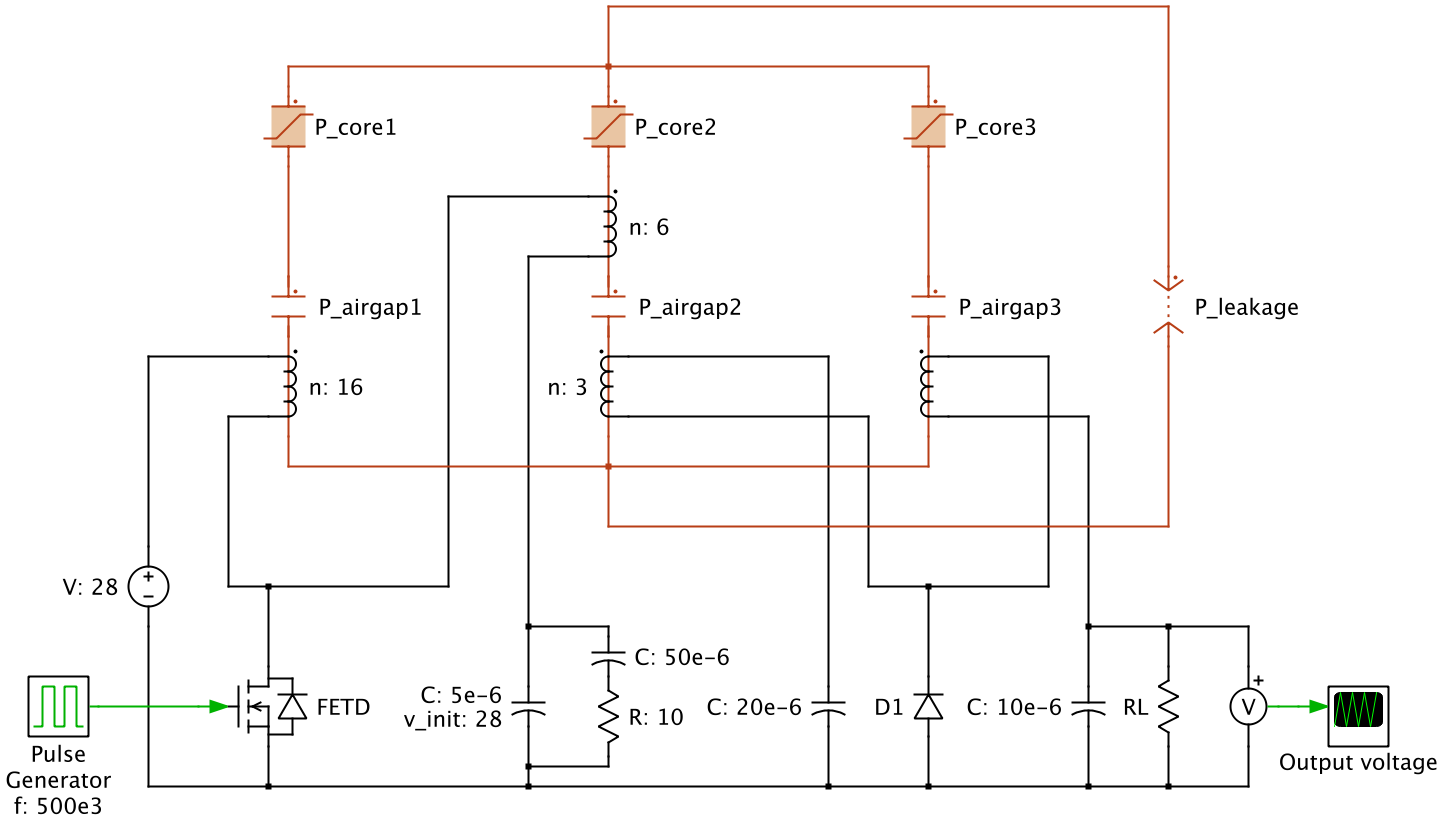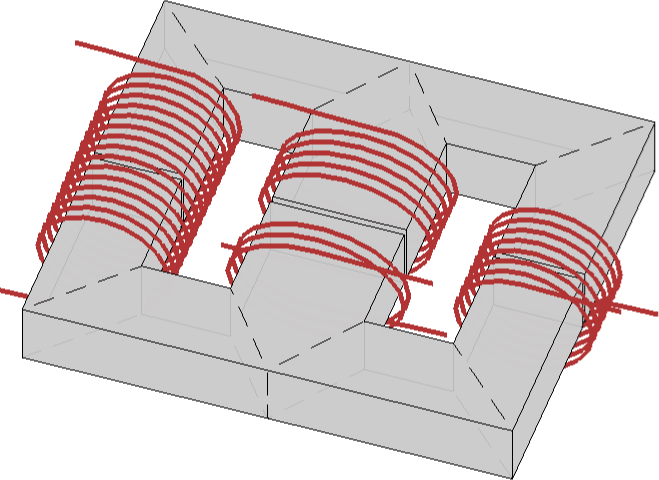Designing Complex Magnetic Components

Inductors and transformers are key components in modern power electronic circuits. Compared to other passive components they are rather difficult to model for the following reasons:
- Magnetic components, especially transformers with multiple windings, can have complex geometric structures. The flux in the magnetic core may be split into several paths with different magnetic properties. In addition to the core flux, each winding has its own leakage flux.
- Core materials such as iron alloy and ferrite express highly non-linear behavior. At high flux densities, the core material saturates, leading to greatly reduced inductor impedance. Moreover, hysteresis effects and eddy currents cause frequency-dependent losses.
In PLECS, the user can build complex magnetic components in a special magnetic circuit domain based on the permeance-capacitance analogy. Primitives such as windings, cores, and air gaps are provided in the component library. By connecting them according to the physical structure the user can create equivalent circuits for arbitrary magnetic components. The available core models include saturation and hysteresis. Frequency-dependent losses can be modeled with magnetic resistances. Windings form the interface between the electrical and the magnetic domains.
Alternatively, less complex magnetic components, such as saturable inductors and single-phase transformers, can be modeled directly in the electrical domain.
Application Example: Cuk Converter
An isolated Cuk converter with integrated magnetics has been modeled in PLECS. Due to proper magnetic coupling between the windings, the converter operates with zero ripple in both the input and output current.

The magnetic circuit consists of two opposing E-cores spaced by an air gap.

For more information on magnetic modeling in PLECS, please visit our technical solutions page on this topic.
